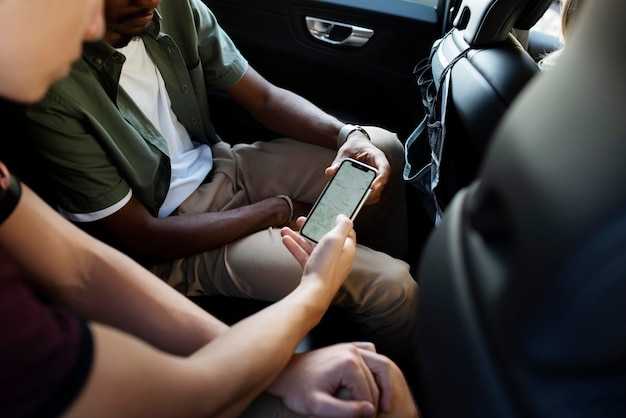Choose ride-hailing apps for most trips in Johannesburg to get the fastest pickups and clear visibility of driver and route. In central areas along the street grid, app rides usually beat street hails for wait times and expenses, and you can track the vehicle and ETA within minutes. With a single tap you see the driver’s name, plate, and live route, and you can share the trip with a group or hand a trusted contact for safety.
Public transit options still exist, but research shows reliability and coverage vary by suburb. Various routes run along major streets, yet counts of delays can spike during peak hours. For predictable results, apps usually provide a faster, safer option within the city core, while public buses cover longer legs at lower cost.
Insurance coverage accompanies app trips, and you should verify which coverage applies before you ride. In addition, the in-app driver profile and live map offer a quick response path to help in an emergency. This adds a layer of security that is often absent on street hails or private minibus trips.
For a larger group or an event, booking a larger vehicle through an app or arranging a private minibus can reduce expenses and simplify coordination. Immense fleet options mean you can pick from sedans to seven-seat vans while keeping travel times within a tight schedule. If you need to stay together, insist on one pickup point and a single driver to minimize handoffs and confusion.
Practical steps to choose: know your route, compare at least two apps, and check live ETA and street pickup zones. Count on a clear price estimate before booking, and confirm the vehicle’s visibility and driver details in the app. For events with multiple riders, plan a workflow that keeps everyone in the same meetup point within minutes of the scheduled start time.
Choosing the Right Ride-Hailing App for Johannesburg: What to install first
Install Uber first, then Bolt
Install Uber first. It delivers the most robust operation and public visibility across Johannesburg. They rely on a large network of drivers and a stable regional footprint, making them the leading ride-hailing companies in Johannesburg. The app adheres to strict safety standards and tracks regulatory changes, presenting an exceptional experience for riders. A simple word: install Uber first. Adding Bolt afterward offers competitive pricing, local promotions, and fast response times that complement Uber’s coverage in developing areas and along key corridors. Whether you’re commuting to the public market or heading home after a night out, this pairing reduces wait times, increases visibility of options, and keeps control in your hands with a thumb-friendly interface.
What to verify after install
Test during peak and off-peak periods to compare ETA and fare estimates. Check safety features, trip sharing, and driver verification; ensure multiple payment options and clear ride details. Watch for changes in regulations that affect fees or surge rules, and how quickly each app updates maps and driver availability in the south of the city. Both apps present innovative features and a robust operations model; if one experiences a temporary outage or poor connectivity, you still have the other as a backup. The goal is consistent visibility and reliable rides, not dependence on a single platform.
Taxis vs Minibuses: Which option fits your route, budget, and luggage
Choose a licensed taxi for most short trips in central Johannesburg, and reserve a minibus for longer suburban routes or when you travel with multiple bags. This aligns with national regulations, keeps the ride clean, and helps you stay within basic budgets while saving time.
Cost and capacity: Taxis typically run on meter or fixed urban rates; short hops in busy corridors commonly cost 60–150 ZAR depending on traffic. Minibuses carry 10–16 passengers and often offer a lower per-kilometer rate on longer legs, making them lucrative for groups or on busy event days. When you book through public e-hailing platforms, you compare options in seconds; the software shows an estimated fare before you confirm. Always look for the logo of a licensed operator on the vehicle or within the app, and prefer options that have safety measures built in and transparent performance data.
Regulations and safety: National rules require licensed vehicles and trained drivers. Verify that the vehicle bears an official license, is clean, and follows basic safety measures such as seat belts and working lights. In busy corridors, station management coordinates with ranks to keep routing orderly; formal public fleets provide rank-based pickup, while private operators work via apps. When using e-hailing, verify the operator’s permission status and ensure the trip is logged in the app’s index for traceability. Keep hands free for luggage handling and prefer payments that can be done hands-free to minimize contact. In countrys with mixed public transport, rely on national networks and check the safety measures posted by the operator.
Step-by-step index to decide: 1) map your route between stations and ranks; 2) assess luggage needs and seating; 3) use the app to compare fare estimates for taxi versus minibus options; 4) confirm the operator is legally registered and follows regulations; 5) choose the option with faster pickup, lower total cost, and smoother luggage handling; 6) after the ride, rate performance in the app to help public management and policy makers improve service.
Scenario examples: If you travel solo on a 4–6 km inner-city route, a taxi is typically cleaner, quicker, and more predictable, with a basic luggage allowance. If you travel with two or more suitcases or a large backpack on a route spanning suburbs or towards a major event, a minibus offers more space and a lower per-person price, making it a favorable option for a group. Look for a clear logo, use a trustworthy e-hailing option, and stay with licensed operators to ensure a smoother experience.
Safety at Hubs and on the Road: Practical tips for Johannesburg transport
Always verify your pickup point before boarding: read the sign, confirm the route with staff, and note the vehicle number to prevent misdirection at the center. Use a published, entrepreneurial approach to safety in african hubs to make travel smoother while you explore the network.
In hubs: quick checks for users
- Arrive 10–15 minutes before departure to reduce crowding during peak hours 07:00–09:00 and 16:00–19:00.
- Read the posted sign for your minibus route; confirm the vehicle number with a professional staff member at the center.
- Use official bays only; avoid touts who can cause breakdowns and misdirection.
- Keep valuables secured, stay in well-lit, staffed zones, and note emergency contact numbers.
- Record the driver’s name and vehicle number; if the change is outright, switch to a verified option.
- Carry a small power bank and a local SIM to stay connected if disruptions occur.
On the road: techniques for safer travel

- Trust the system: follow official signage, route numbers, and hand signals from operators, especially in noord and nearby places.
- Choose a seat away from doors in dense buses; use seatbelts where available and monitor traffic patterns.
- Maintain polite, professional communication with drivers; report any unsafe behavior immediately to hub staff.
- If a breakdown happens, move to the shoulder or a safe area, keep others informed, and contact the central control line.
- Be mindful of salaries and maintenance cycles that affect vehicle reliability; prefer operators with consistent maintenance records.
dankie for supporting a modern, african transport network that prioritizes user safety. By exploring places such as noord centers and other hubs, travelers can map a potential path that is highly professional, with well-trained staff, and a clear center point for assistance. This venture benefits everyone who navigates Johannesburg by minibus or other modes, and the practice to analyze risk, plan ahead, and stay informed keeps the system resilient.
Booking and Managing a Small-Group RK Trip: Step-by-step process
Confirm licenses and roadworthiness before taking any booking, according to the compliance framework. This protects life, reduces risk, and keeps you compliant.
Preparation phase
Step 1: Define the group profile: capacity (6–14 passengers typical), vehicle type, accessibility needs, journey length, and number of stops. Create a single, most likely route with mileages and time estimates to support word clarity in marketing and client expectations, ensuring the most realistic plan is set from the start.
Step 2: Verify fleet paperwork: licenses, roadworthiness, registration, insurance, and service history. Maintain a centralized file that shows validity dates and renewal reminders. Attach visible safety signs on each vehicle and carry a kit with fire extinguisher, first aid, and reflective vests for the crew. Use a national standard checklist for each vehicle to prove compliance and high safety standards.
Step 3: Plan the budget and value adds: estimate fuel consumption by route, add contingency, and set a target for profits. Align pricing with the experience and reliability you deliver. Invest in adding value through services like bottled water, Wi-Fi, or city guides; use a concise marketing message and a single word tag to label the offer. Create a simple 1-page client offer with terms and conditions and a clear deposit policy. Track expenses and adjust the plan as you add more services, ensuring the journey to success remains solid.
Operation and review
Step 4: Booking and contracts: collect guest details, payment method, and any special needs. Use a straightforward contract that covers cancellation windows, change fees, inclusions, and consent for photos if needed. Ensure a valid waiver for activities with risk, and store the signed document in the источник of truth for audits.
Step 5: On-trip management: monitor the route in real time, re-route if traffic or weather affects times; schedule stops at safe, well-lit points with restroom access; keep fuel logs and mileage; communicate clearly via a dedicated channel; record any deviations for compliance and learning; stop management keeps the crew aligned and players satisfied.
Step 6: Post-trip review and upgrade: collect feedback via a short survey; analyze expenses versus profits and adjust future pricing; update your route and service offerings; maintain the vehicle life-cycle and plan upgrades when roadworthiness checks indicate service life extension is possible. Close the loop with drivers and integrate insights into the marketing plan to drive ongoing success.
Money, Payments, and Tipping: Local norms for Johannesburg transport

Always confirm the fare and means of payment before you start your ride. In Johannesburg, rides can be billed by distance or route, and drivers may accept cash, card, or app payments. If you use an app, the payment method appears on the screen; if you pay cash, have a small stack of rand ready to cover the fare and a tip. Invest in a little change to smooth the exchange and make the scene easier for both sides.
Apps streamline payments and tips. Platforms like Uber, Bolt, and local services show the fare upfront and let you add a tip within the app. The orange app icon helps you identify Bolt and other providers quickly. Be sure to check the app’s tip option before you approve the ride. Many drivers wear a gold badge on traditional taxis, signaling seniority and reliability; you can assess the driver’s expertise ja performance history to set your expectations and generate a constructive response.
Tipping norms vary by service and distance. For a short city ride, a tip of 5–20 rand is typical; for longer journeys or when the driver assists with luggage, 20–50 rand or more is reasonable. If you ride with an app, you can increase the tip there; if you pay cash, hand the tip directly to the driver at the end and say thank you.
Track expenses and receipts for business travel. Save app receipts or bank statements to document daily travel for clients and for your bank records. This helps with expenses management and keeps clients confident about costs.
Language matters. Greet in the local language when possible and keep your face friendly. A customer-focused approach builds trust with drivers and helps you get the best service. Mention your destination clearly, and be patient if payment prompts or apps update during the ride.
Building strong relationships with drivers pays off. Your hands on the wheel, clear communication, and a courteous response contribute to better performance from the driver. Explore different means of payment and hours to fit your schedule, and invest in services that align with your daily needs. This approach benefits both clients and drivers and keeps the Johannesburg transport experience smooth.



Kommentit